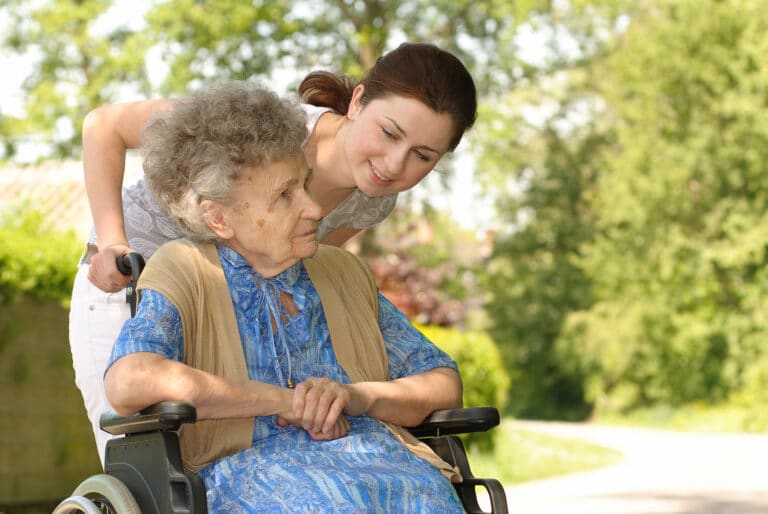In a previous article titled “Benefits of Mobility Aids,” we explored the advantages of using mobility aids and how these devices can enhance the quality of life for individuals facing mobility challenges. However, determining whether you require aids such as walkers, canes, or wheelchairs may not always be clear.
In our previous discussion, we highlighted one sign that a mobility aid may be needed: a shuffling gait. However, there are many more signs that warrant our attention. Aging undoubtedly presents its own set of challenges, with mobility often becoming a prominent concern. It is important to recognize these changes and signs and embrace the assistance that mobility aids can provide. In this article, we will explore some of the signs that may suggest it’s time to consider the use of a mobility aid. Whether you are experiencing challenges with balance, mobility, or simply wish to explore options for enhancing your daily life, this guide will help support you on your journey to mobility independence.
1. Muscle Weakness:
Weak muscles can lead to decreased stability, causing the individual to sway or lean to one side while walking. Leaning up against walls, difficulty standing from a seated position, or using counters to help stabilize oneself are all signs of muscle weakness and instability. Muscle weakness can also present with a slow walking pace and frequent stumbling. It’s important to note that these signs can vary in severity among individuals, and they may be indicative of various underlying health conditions. If muscle weakness is suspected, consulting with a healthcare professional is recommended to determine the cause and appropriate interventions, which may include targeted exercises, physical therapy, or the use of mobility aids.
2. Frequent Falls/Fear of Falling:
Have you experienced a fall in the past, leaving you apprehensive about the possibility of falling again? Numerous homes harbor potential tripping hazards that require attention, such as loose rugs, raised carpets, clutter, and inadequately lit areas (for additional insights on fall prevention, refer to a previous article “Home and Personal Tips for Fall Prevention”). Falls can be triggered by various factors, ranging from environmental hazards at home to underlying medical conditions. It is crucial to consult with your doctor to assess whether the use of a walking aid could provide the support you need.
3. Loss of Sensation:
A person may develop sensory issues in their feet for various reasons and can be associated with different underlying conditions such as Diabetic Neuropathy or Rheumatoid Arthritis. While canes and walkers do not replace lost sensation, they can provide tactile feedback through the hands, arms, and upper body. This feedback helps individuals better understand their surroundings and navigate obstacles effectively.
4. Fear of Leaving Your Home:
Are you frequently hesitant to leave your home? Do you find yourself overwhelmed by the possibility of encountering challenges such as limited access to stores, navigating numerous stairs, or concerns about fatigue while trying to manage your daily errands? Having a walker or wheelchair can be a valuable companion as it offers stability, a resting option, reduced physical strain, increased independence, and other features that can enhance comfort and convenience during outings.
Special Considerations:
It is vital that you consult with your health care provider before you consider using/buying a walking aid device. While walking aids, such as canes, walkers, and crutches are designed to provide support and improve your mobility, improper use or selection can potentially cause harm. If you use your mobility aid inappropriately, you can risk injury. Be sure to have your physio therapist/occupational therapist work with you to choose the correct walking aid, to ensure the best possible fit, and educate you with the proper techniques required to use the device properly. Additionally, your healthcare provider can aid in the periodic reassessment of your mobility devices and provide any necessary adjustments to promote safe and effective use.
Recognizing these sometimes subtle yet evident signs and changes in mobility underscores the importance of taking proactive steps. It’s essential to lean on the experience and guidance of your healthcare team and in doing so, can ensure that you can walk with confidence and assurance. Rick Hanson eloquently describes the transformative power of mobility devices, specifically the wheelchair, stating, “The wheelchair should not be a symbol of disability. A wheelchair is a vehicle to liberation and freedom; a chariot for independence.” This sentiment is applicable to all types of mobility aids, emphasizing their role in enhancing independence and quality of life.
- Seeing Clearly: Glaucoma Awareness for Seniors - March 10, 2025
- The Sounds of Life: Hearing Aid Care for Seniors - March 3, 2025
- Save a Life Today!! ❤️ - February 18, 2025








